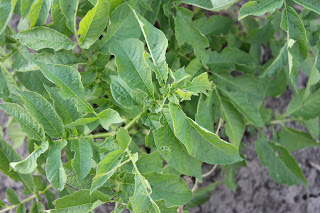All the rain we’ve received this summer has turned out to be a blessing for the raspberries. The moisture paired with the warmer weather we’ve been experiencing, in my mind, has created perfect growing conditions for our raspberries.
Every day when we get home from work, even before going inside, it’s our tradition to go check on the garden. Now that the raspberries are finally ready, chowing down some fresh berries when checking the garden is a must! It’s astonishing to see how many berries there actually is.
We have so many berries it’s difficult to know what to do with them yet we feel obligated to pick them and not allow them to go to waste. Our berries have such a wonderful flavor; they are sweet with a slight yet not over powering tartness. We love the taste of a ripe raspberry that was picked a few seconds before popping in your mouth; quite often we just pick and eat as we go – why dirty a bowl?
Last Sunday I picked some berries for the first time; I ended up with about 8 cups. Yesterday (Wednesday) I picked some more; this time I got about 12 cups. I try to pick only the ripe berries and leave everything else until they are completely ripe. I find that there is usually a new batch of fresh berries every 3-4 days. There are so many berries we try to only pick the “perfect” berries and leave the deformed and underdeveloped berries for the birds and bugs. Are raspberry bushes are also thorn less, making picking quite painless.
As much as we would like to be like bears and live off raspberries, I don’t think our tummies would appreciate it. So what to do with all these berries?
(1) Jam – As my supply is running low, it’s time to make some more raspberry jam. I normally make cooked jam with pectin and store it in sealed jars. This year I think I’m also going to make some freezer jam/preserves. The two types are basically the same but one uses pectin and gets stored in sealed glass jars, and the other has no pectin and is stored in the freezer. (FYI: the traditional sealed jar jam makes wonderful Christmas presents.)
(2) Raspberry Sorbet – last winter I used a bucket of frozen berries to make Raspberry Sorbet in my ice cream maker. It was unbelievable! It makes a wonderful cold treat and preserves the taste and tartness of the berries perfectly. It’s also a good way to use lots of berries.
(3) Raspberry Lemonade – This is something I haven’t tried yet but I think I will love. Basically all you do is make a pitcher of lemonade, crush and strain some berries, and add the berry juice to flavor your lemonade. And now that I think of it, I could just as easily make Raspberry Ice Tea.
(4) Freeze ‘em – Because the picked berries don’t last long in the fridge, unless you are going to eat them within the day I would recommend freezing them. If I am going to use the berries in jam, sorbet or for juice, I wash them quickly, put them in a bucket and in the freezer they go. If I want to be able to use the whole berries at a later date, I meticulously pick through them looking for the best of the best, placing them on a cookie sheet and then freezing.
Once frozen, I take them off the cookie tray, package them in containers and of course store in
the freezer. If you do this your berries won’t get smooshed and when they thaw you’ll have nice
whole berries. The whole berries are wonderful on ice cream, cheese cake, angel food cake,
custard, etc. I love warm custard in the winter with raspberries.
The bugs may be bothersome when picking berries, but when I think of the things I can do with them and how much money I’m saving by not having to buy them, it’s worth every bite I get!































